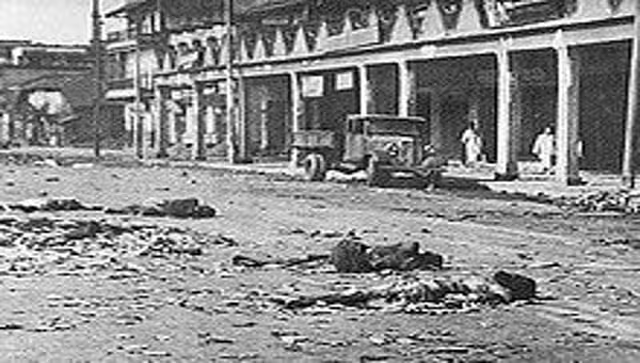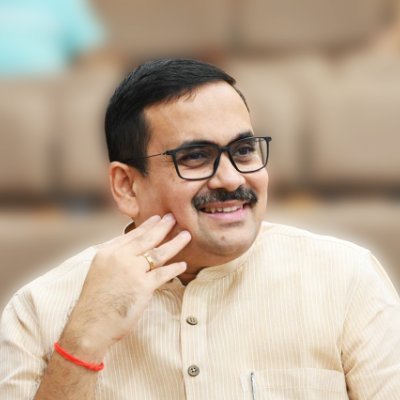While the saga of partition on the western front has seen ample research, documentation, and displays, much of the saga of the eastern partition and its various dimensions still remain to be narrated, documented, and re-stated
Referring to a ‘private conversation’ he had with Jawaharlal Nehru, in Noakhali ‘around the end of 1946’, Dr Rammanohar Lohia, recalled how Nehru spoke of “the water, slime bush and tree that he found everywhere in East Bengal. He said that was not the India he or I knew and wanted with some vehemence to cut East Bengal away from the mainland of India. That was an extraordinary observation…” The observation surprised Lohia, who found it natural to identify oneself with the eastern part of Bengal, “for myself,” he wrote with exuberance, “I have found the gay laughter of East Bengal women unparalleled in all the world.”
If one puts together bits and pieces of information, conversations, political statements and counterpoints, it becomes evident that Nehru never identified himself with the trials and travails of the people of East Bengal and in a sense with Bengal as a whole. It was this approach of his, combined with his obsession of trying to chisel an image of himself as the ‘teacher of the world’ along with his other quirks, that made him resist a complete exchange of population on the eastern front.
While Punjab saw a complete exchange of population, for Bengal Nehru resisted that proposition despite repeated entreaties by Dr Syama Prasad Mookerjee. A few years before this, in his Pakistan or the Partition of India, Dr Babasaheb Ambedkar too, had advocated logically the need for an exchange of population. Dr Mookerjee’s pleas fell on deaf ears and Nehru refused to accede to it. Nehru replied that such an exchange of population would be economically, socially, spiritually detrimental to the Hindus of East Bengal. When Dr Mookerjee countered as to why this logic was not applied to the Punjab sector and asked Nehru to place his arguments in ‘cold-storage’ for a while, he was only met with a stony non-compliant silence. It may also be useful here to recall that the Communist Party of India, for years Nehru’s loyal ally, had raised its voice against the partition of Bengal, because it wanted Bengal, in its entirety, to go to Pakistan. Such is the mindset of the predecessors of the present legatees of the communist movement in India.
There is and has yet not been any plausible or convincing reason on why Nehru stubbornly refused to work out this exchange of population except that he felt disconnected with the tribulations of the Hindus of East Bengal and was more concerned with burnishing his international image as a secularist. Therefore, unlike Punjab where the partition drew to a close, writers and observers have spoken of the partition on India’s eastern flank as a ‘prolonged partition’ with its pogroms which occurred periodically and over decades, ejecting refugees in waves and bringing in its wake, a continuous cycle of disruption, dislocation, uprooting and death.
Even in trying to prevent this or in trying to mitigate the suffering and the violence Nehru proved ineffective and inept. When a series of attacks convulsed the minorities in East Bengal in February 1950, the first in a series of major attacks that would continue over the decades, Acharya Kripalani complained in disgust over Pandit Nehru’s ‘inaction’. “Can be safe if” he asked, “at critical times because of difficulties involved in possible solutions, it refuses to act? Does not non-action amount often to disastrous action? Is it not better to strive and suffer and persist than merely vegetate and fade away…Ruling a nation is a no holiday affair…”
The AICC tribes of historians whose standards have drastically depleted since the days of Pattabhi Sitaramayya have often spoken of Dr Syama Prasad Mookerjee’s call to initiate action against Pakistan for failing to protect her minorities in the early days and years after partition, as an ultra-radical stand which had no one to second it. Interestingly not only Dr Mookerjee, but one even saw the likes of Jayaprakash Narayan call for action against the East Pakistan dispensation. When he saw the excruciating effects of the unfinished or prolonged partition, JP argued, “If all peaceful methods fail and Pakistan could not guarantee justice and security for the minorities, the only alternative left is to send our own forces into East Bengal to protect our minorities there.”
The historic resignation letter of Pakistan’s first Law Minister and Dalit leader, Jogendra Nath Mandal, throws more light on partition, especially the eastern front and its treatment meted out to the minority Hindus. Mandal himself had to resign and flee to India. It is a letter that assumes increasing relevance, especially when one remembers the horrors of partition and the horrors and extreme tribulations that the victims of a prolonged partition had to face because of Congress’s intransigence and Nehru’s shortsightedness. Pakistan was no place for Dalits, Mandal’s repeated pleadings with Liaqat Ali Khan and Kwaja Nazimuddin, then chief minister of East Bengal, to include two scheduled caste ministers in the East Bengal cabinet was stoutly ignored. “My outspokenness, vigilance and sincere efforts to safeguard the interests of minorities of Pakistan, in general, and of the scheduled caste in particular, were considered a matter of annoyance to the East Bengal Govt. and few league leaders…” Mandal lamented in his letter of resignation to Liaqat Ali.
The enormity of the population shift post partition and its continued movement emerges from the pages of Mandal’s letter. “What is today the condition in East Bengal? About fifty lakhs of Hindus have left since the partition of the country. Apart from the East Bengal riots of last February, the reasons for such a large-scale exodus of Hindus are many. The boycott by the Muslims of Hindu lawyers, medical practitioners, shop-keepers, traders and merchants has compelled Hindus to migrate to West Bengal in search of their means of livelihood. Wholesale requisition of Hindu houses even without following due process of law in many and non-payment of any rent whatsoever to the owners have compelled them to seek for Indian shelter…Ansars against whom I received complaints all over are a standing menace to the safety and security of Hindus. Interference in matters of education and methods adopted by the Education Authority for Islamisation frightened the teaching staff of Secondary Schools and Colleges out of their old familiar moorings. They have left East Bengal. As a result most of the educational institutions have been closed…Owing to the migration of Medical Practitioners there is hardly any means of proper treatment of patients. Almost all the priests who used to worship the household deities at Hindu houses have left. Important places of worship have been abandoned…Artisans who made images of gods and goddesses have also left…I shall not be unjustified in stating that Hindus of Pakistan have to all intent and purposes been rendered ‘Stateless’ in their own houses…”
As we observe ‘Partition Horror Remembrance Day’ in response to a deeply thought-provoking and moving appeal by Prime Minister Narendra Modi – the first time ever in the history of independent India that such a call was given – in which he said, “Partition’s pains can never be forgotten. Millions of our sisters and brothers were displaced and many lost their lives due to mindless hate and violence. In memory of the struggles and sacrifices of our people, 14th August will be observed as ‘Partition Horrors Remembrance Day’,” it is an appropriate occasion to reflect on the peculiarities and intricacies of partition on the eastern front, on its prolonged and debilitating effects and on its continuation.
While the saga of partition on the western front has seen ample research, documentation and displays, with a ‘Partition Museum’ in Amritsar, much of the saga of the eastern partition and its various dimensions still remain to be narrated, documented and re-stated. Kolkata still waits for the ‘Partition Museum’ and West Bengal still awaits its partition-holocaust memorial.
By calling for the observance of ‘Partition Horror Remembrance Day’, PM Modi has opened up a wholly new dimension, with scope for deep research and reflection. It was long awaited and has made us alive to a past that can never be suppressed, ignored or forgotten.
(The views expressed are the author's own and do not necessarily reflect the position of the organisation)


